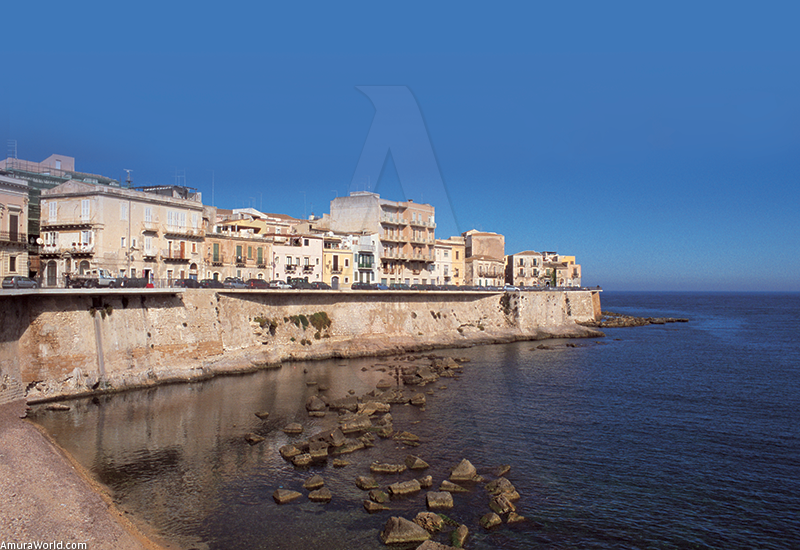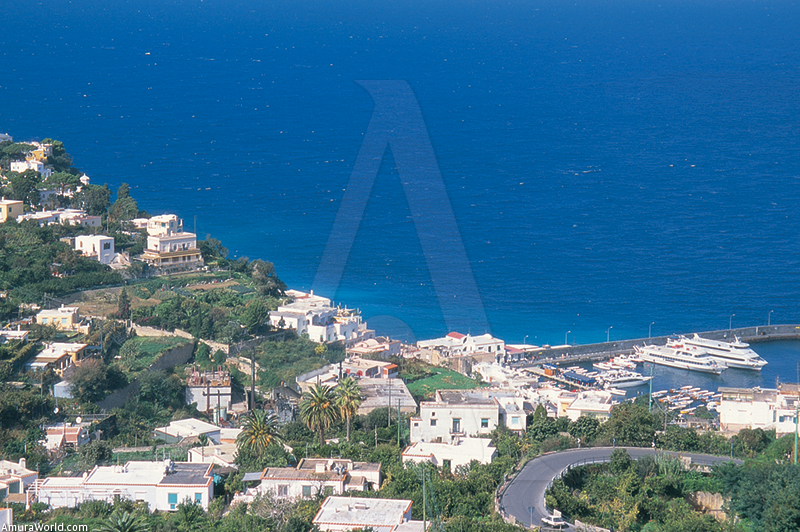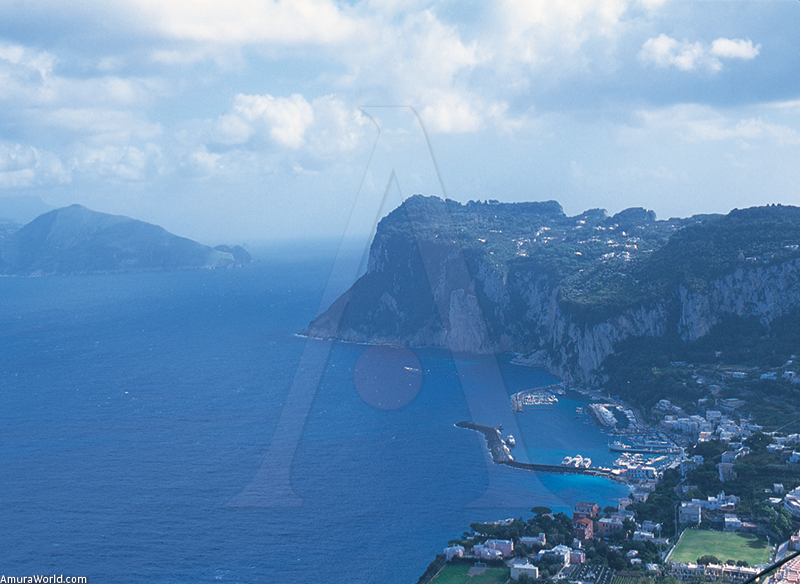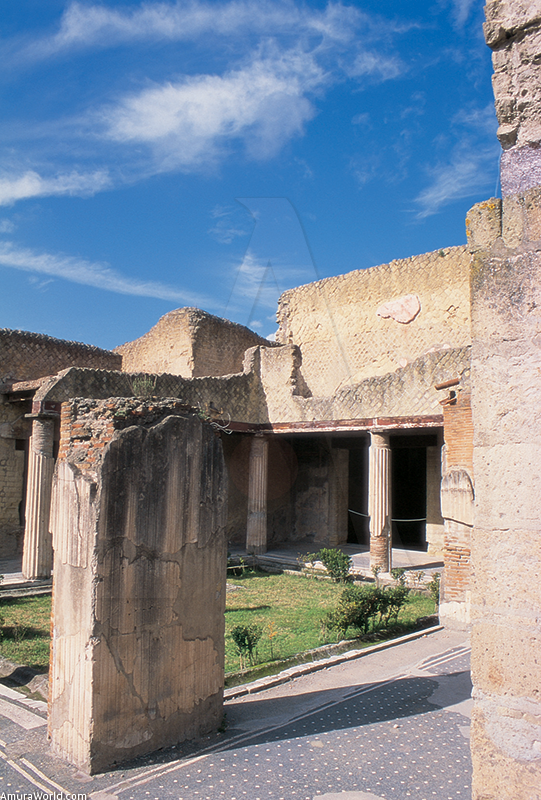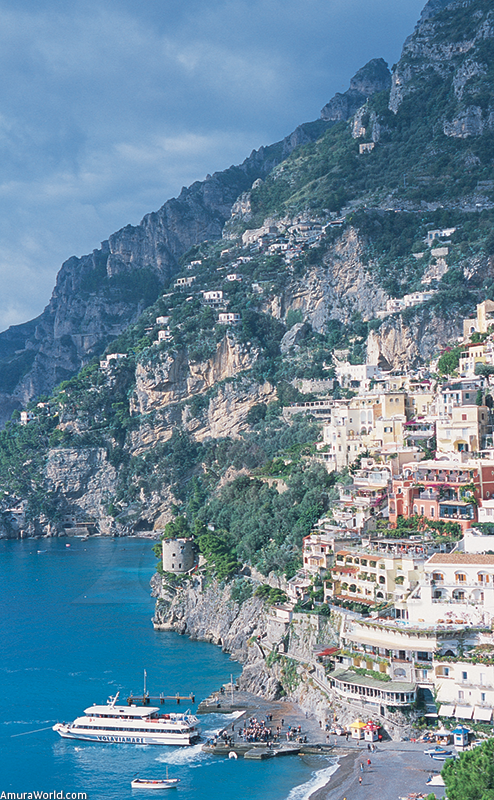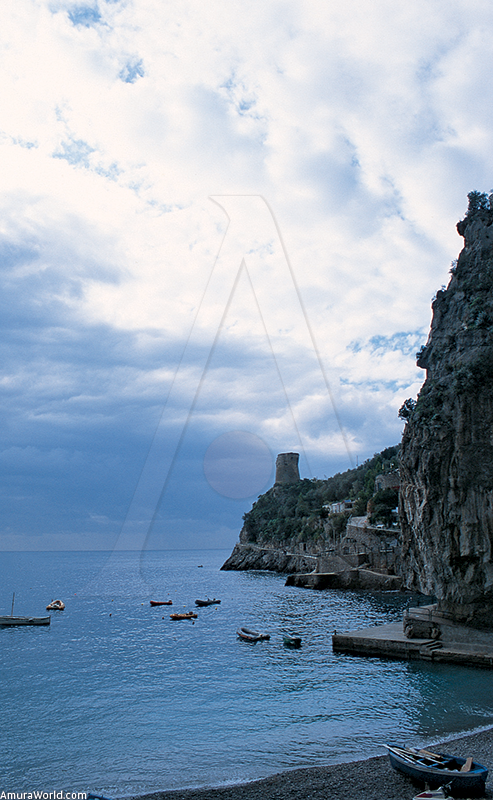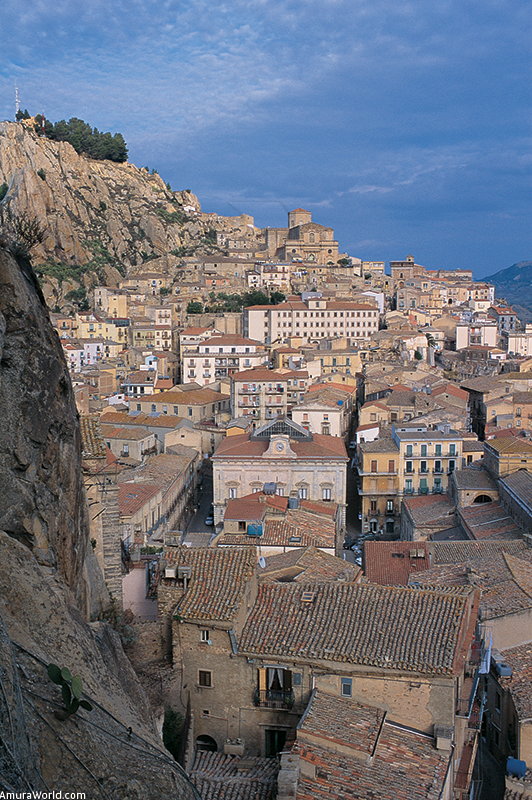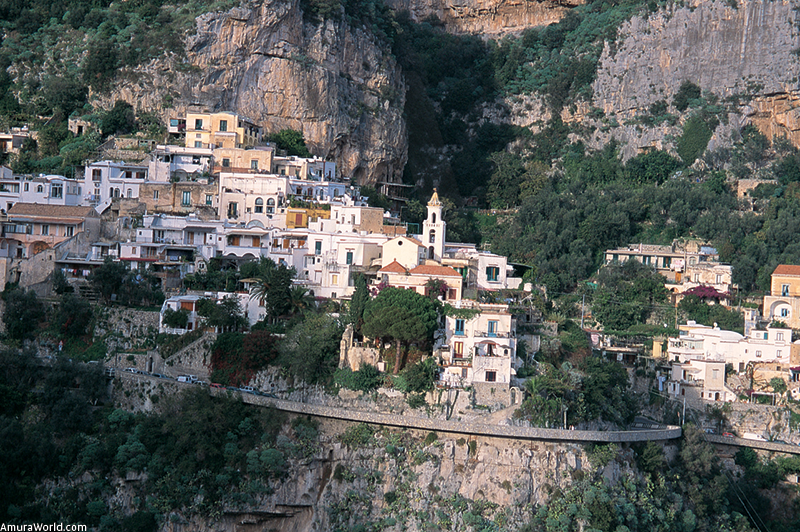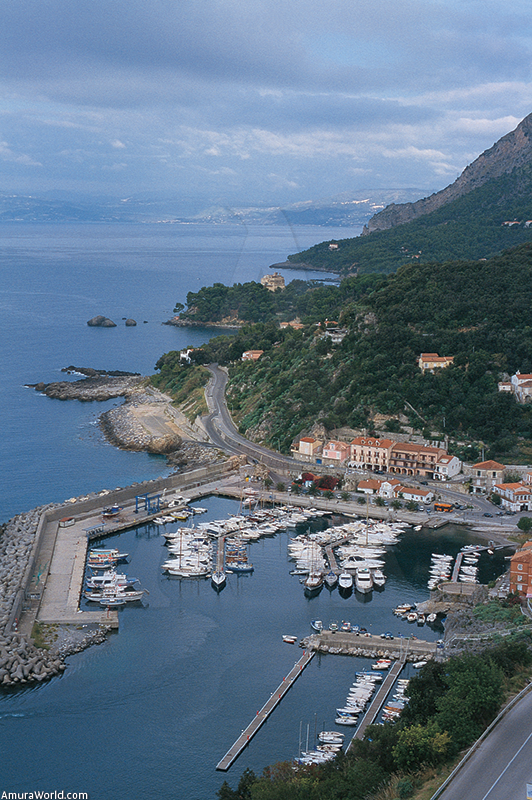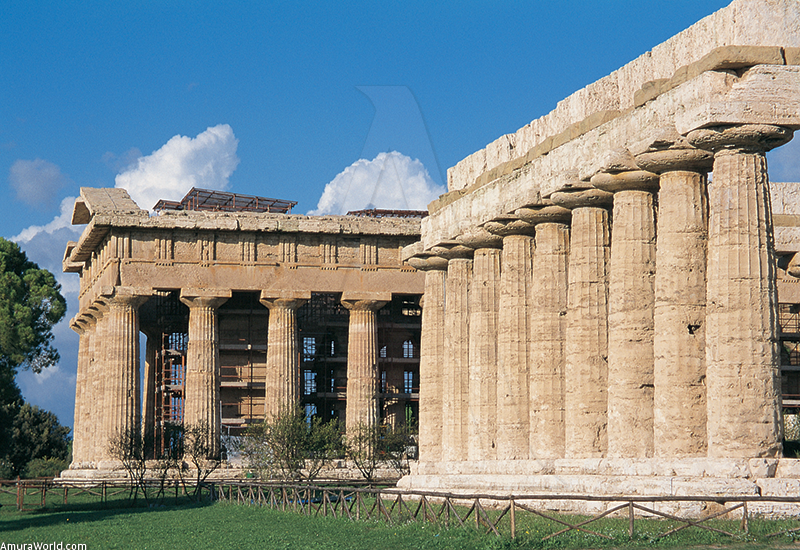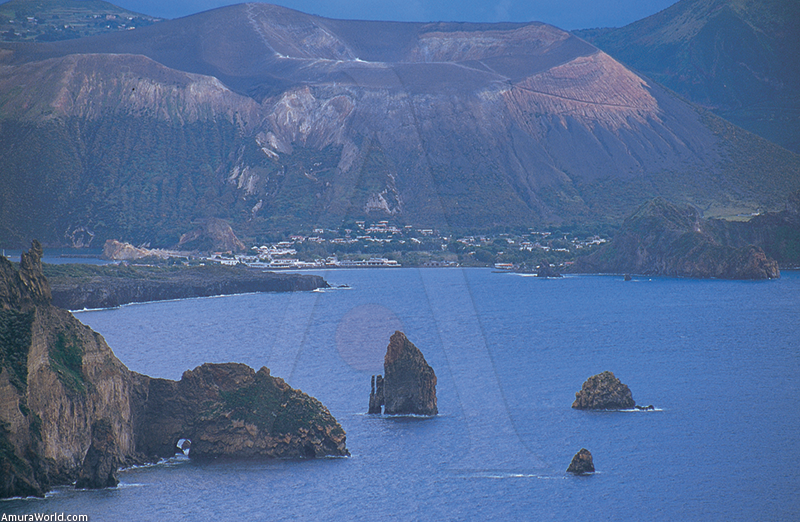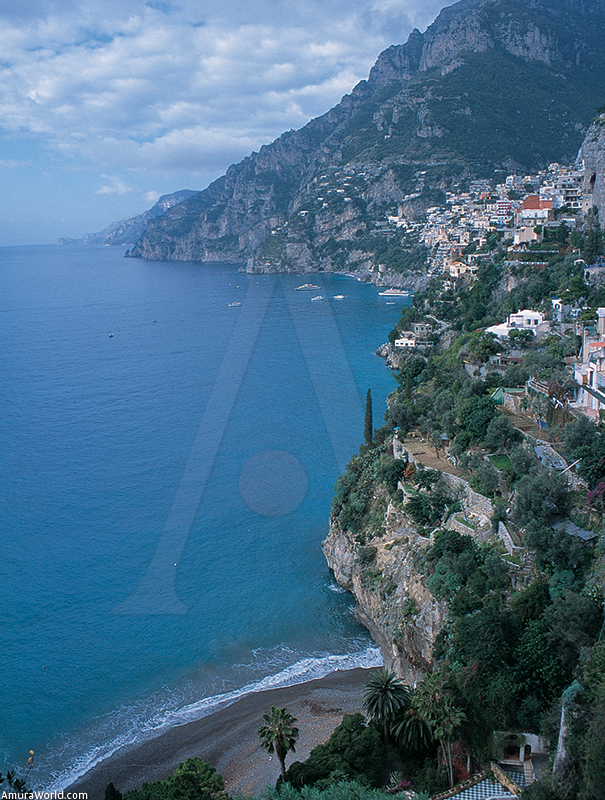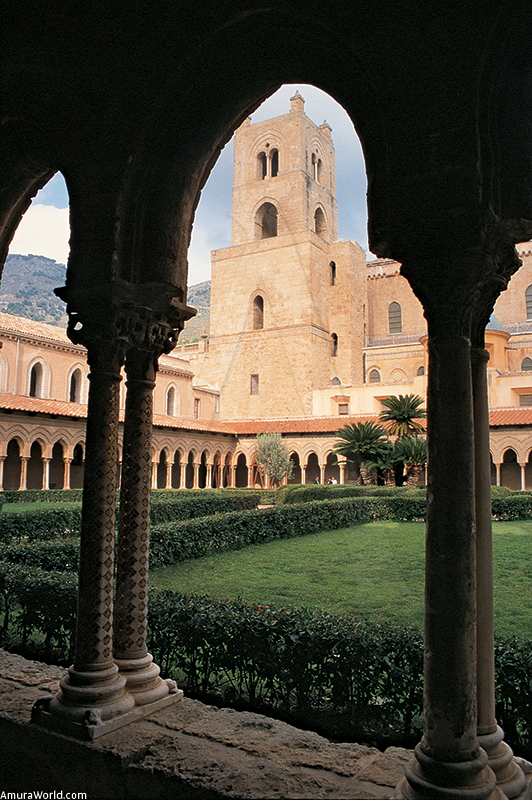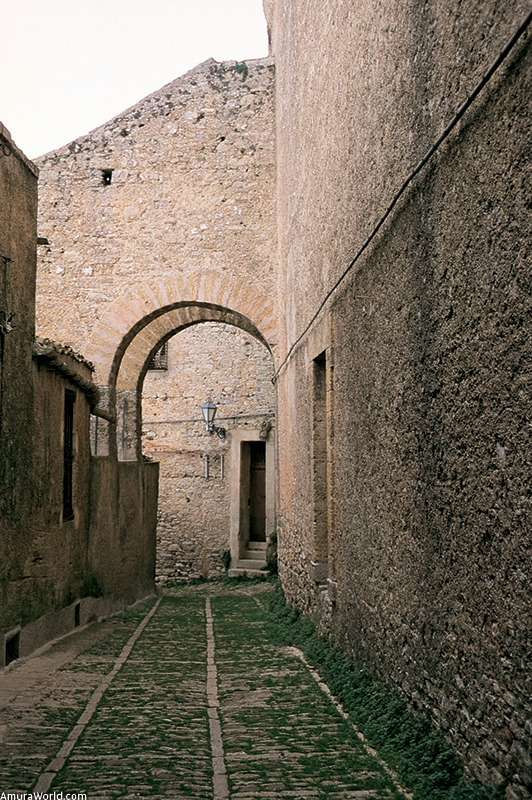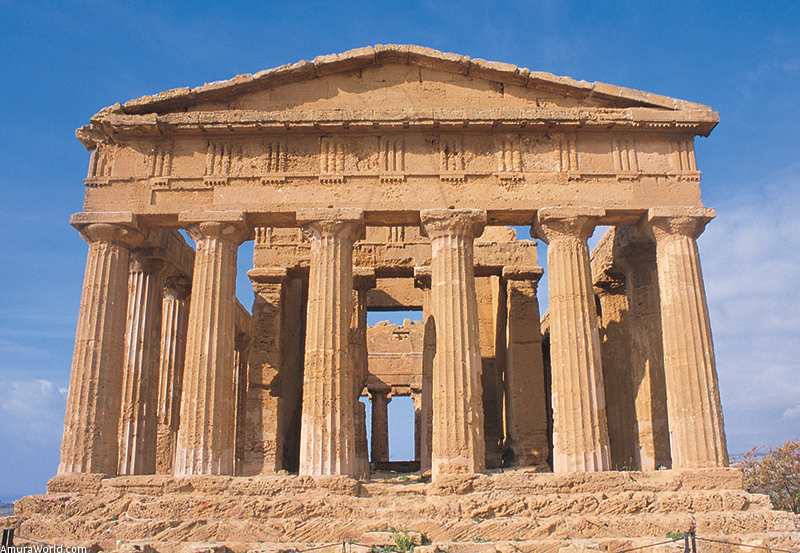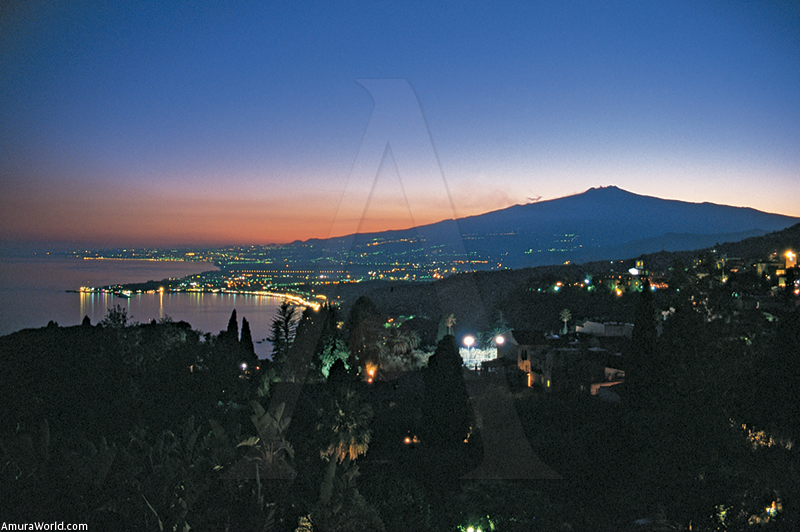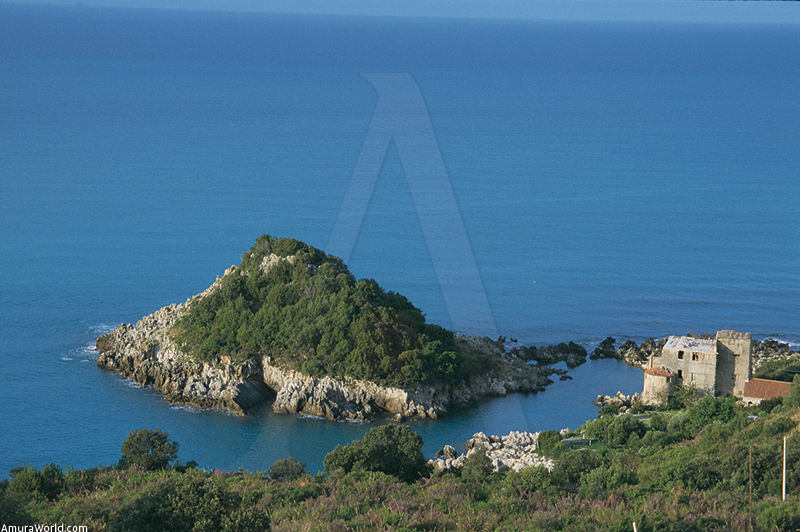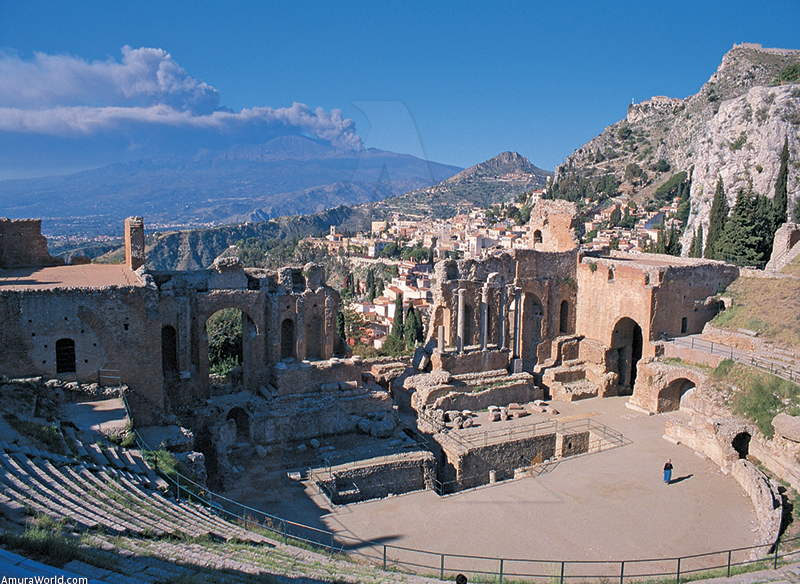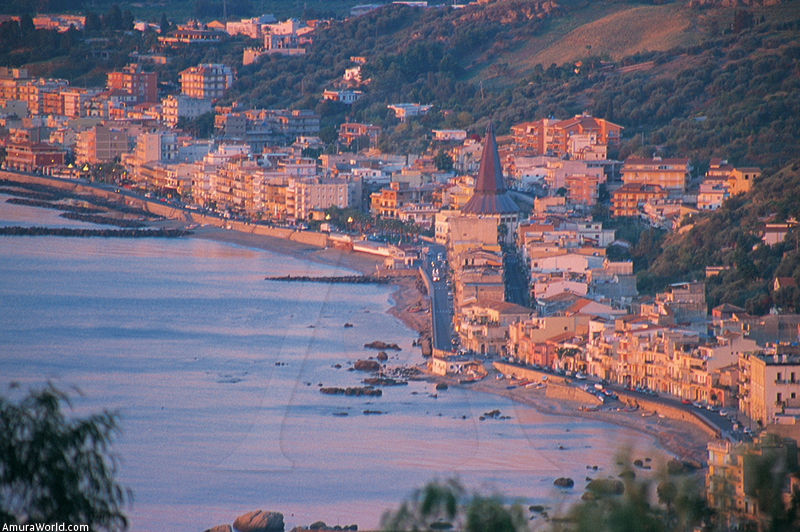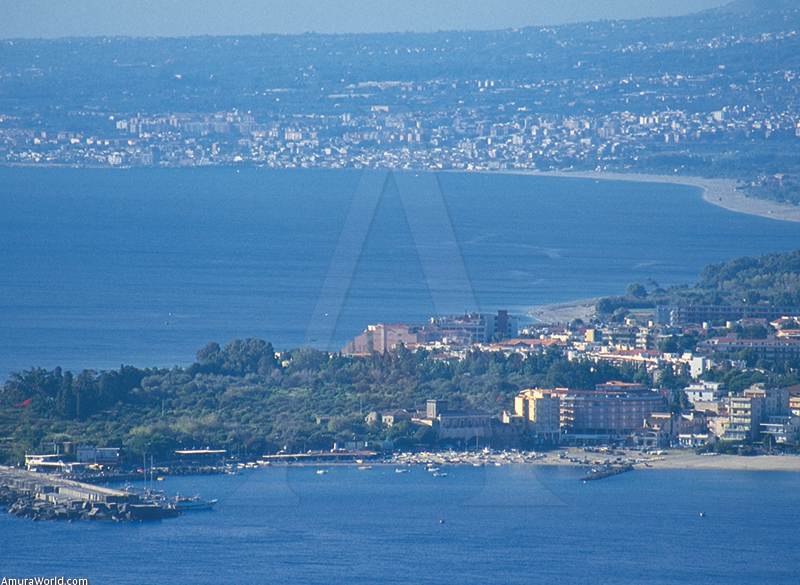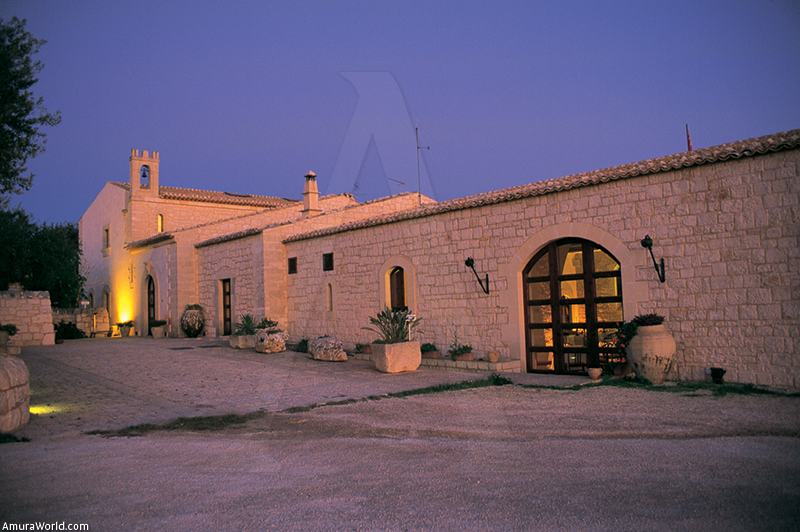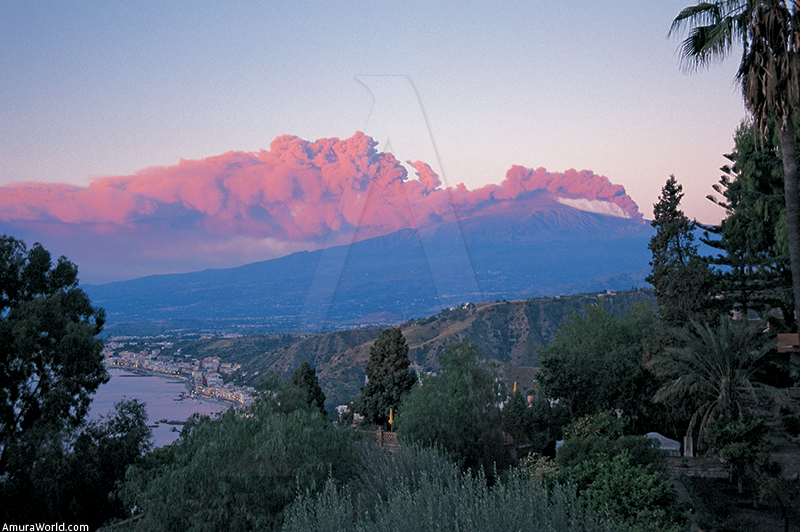It is said that Rome is eternal, that Italy is beautiful. that Italians are loud, the streets chaotic, the monuments fabulous and that is why Italy is marvelous. I cannot forget its glamour, elegance and delicacy as well as the presence of palaces from different periods, streets and scenes that surprise and entice. I have been conquered by the cuisine. amazed by the music, become tenderhearted by the smiles and fallen in love with Italy.The yacht put out to sea from Rome and sailed off to discover the southwest coast toward Sicily, discovering the history of a grand empire.
From Rome to Sorrento
Rome is a zigzagging streamer of streets that flow into a number of beautiful plazas festooned with monuments from the past and dotted with statues sculpted in the times of Julius Caesar. It is a pleas- ure to visit Rome and partake of its vibrating rhythm and attractive existence, a place where you will discover the Fountain of Trevi, the di Spagna and Popolo plazas, the Coliseum and other ves- tiges of the Roman Empire such as the Forum and the Caracalla Thermae, the Vatican with all its treasures, huge salons and the Basilica of Saint Peter; churches ornamented by works of art and ancient palaces such as the Villa Borghese.
But Rome is also shopping in the best stores, discovering the most renowned restaurants, like La Rosetta and the Camponechi, staying in elegant hotels, like the Lord Byron, conversing with the people and listening to the buzzing on the streets.
In its surroundings I fell in love with the Villa d’Este, the palace that belonged to Lucrezia Borgia’s son. a place where, since 1550. the gardens bid one to listen to the music of its fountains; and the Villa Adriana. Emperor Hadrian’s summer resi- dence. built in 120 AC where I explored the gardens and where statues are eternally reflected in the waters of the ponds.
These are places that beguile with their roman- ticism and invite visitors to step back in time to when Rome was the capital of the world. Rome, nowadays a great treasure of humanity, is a temptress that envelops with its passionate charm.
We set sail in our large yacht from the Lido di Osta port, at the mouth of the Tiber River, to sail along a coast with alternating hills and long beach- es. until we reached the beautiful Bay of Naples, passing the Ischia Islands, the largest in the Bay of Naples, and Procida. where the pink, white and yel- low houses paint the edge of the sea. Porto de Ischia or Casamicciola Terme are excellent marinas from which to set out to visit the first and Marina Grande, on the second, for exploring the Abbazia San Michele Arcangelo and the Palazzo Reale d'Avalos.
“Someone who has seem Naples can never be sad,” said Goethe of this place where the waves dance on a stunning bay guarded by Vesuvius. Its elegant buildings frame streets and avenues, the dust of the years disappears behind the clothes hanging out to dry on clotheslines that are slung from window to window.
I get lost, discover, and am amazed as Naples surrenders itself in an improvised, unorganized way beating to the rhythm of its people and their shouts. This is what makes Naples so passionate. The huge port is guarded by the Castello dell’Ovo. an impressive fort located at the edge of the sea. and the Castello Nuovo; huge ships sail by yachts and sailboats and, from the city and its terraced cafes, comes the clamor of Neapolitan song and the shouts of its residents. The Duomo, an elegant cathedral, is the adoration of Neapolitans and the museum pres- ents a superb collection of Roman art from the period when Pompeii glittered on the bay.
We passed the port of Ercolano. where we docked and visited the ruins of Herculaneum, that tranquil harbor destroyed in 69 AD and submerged in a river of volcanic mud that flowed from the erup- tion of Vesuvius in 79 AD. The city was preserved until 1709. when it was discovered and now its almost intact streets and houses decorated with paintings stand witness to history. The baths still vibrate with the echoes of voices that rang inside its walls almost 2,000 years ago, the stores preserve merchandise from that era and the Casa dei Cervi. with its gardens full of strolling ghosts, amazes.
When the sun lit up the coast with its fiery col- ors and Vesuvius raised its silhouette 1,277 meters (4,189 feet) above the sunset we reached the marina of Sorrento, lying at the foot of a cliff that limits a peninsula that is infused with the aroma of lemons and flowers.
Sorrento is elegance personified, a remembrance of the Belle Époque, a time when ladies wearing hats with feathers enjoyed a lemoncello (lemon liquor) on the terraces and when the Excelsior Vittoria hotel was the heart of summer life. The narrow streets still vibrate with the glamour and the shops vie in elegance. We ate dinner in the renowned Caruso restau- rant. where the famous tenor often dined.
From Sorrento to Capri
The next day I got lost in the narrow streets of ancient Pompeii, that fantastic Roman city that rose from the past thanks to the rain of ashes that covered it when Vesuvius erupted in 79 AD. The marine door allows access to its streets and plazas, the houses preserve their murals and patios and the Stabies baths appear to be functioning, the theater could prepare itself for a new play and in the gym you can see the ghosts of training athletes. The amphitheater could hold 20,000 spectators, the Forum is an immense plaza surrounded by columns, crowded with people, and the finest murals are found in the homes of Meandro. Lucretius Fronto, Vettii. the Villa of the Mysteries and the house of della Venere. The city has perfectly passed the test of time, the gardens have flowered again once they were cleared of ash, the streets are filled with visitors and it seems as if the city has surged from the past without being harmed. It is an authentic gem.
After visiting Sorrento, its Piazza Tasso. Duomo SS Filippo e Giacomo and the church of San Antonio, we continued our voyage along the Sorrentine coast, discovering the beauty of its hillsides planted with olive and lemon trees, where charming towns with beautiful marinas, like Vico Equense. Piano di Sorrento. San Angelo, Sorrento and Massa Lubrense are located. We passed Point Campanella and reached the island of Capri, a Mediterranean treasure of dazzling white towns, where we docked in the Marina Grande, lying at the foot of the mountain, after visiting the famed Grotto Azzurra, the Blue Grotto.
It is a pleasure to explore the streets of the city of Capri, take a scooter ride along the highways that zigzag through the island and discover the narrow streets of Anacapri and its beautiful vistas. The nights are lit up by the stars that are reflected in the water and the lights of the towns seem to come straight out of a fairy tale.
From Capri to Salerno
From Capri we reached the southern part of the peninsula to explore the Amalfi coast, where pine- covered mountains plunge into the turquoise sea. trapping the white towns that are located along the 50-kilometer (31-mile) coastline. It is one of Europe’s most beautiful coasts and visiting its coves and beaches is very enjoyable.
Positano is all subtlety and has streets that descend to the sea. a beach and marina and white houses that seem to admire the horizon as well as the dome of its church, whose colors are a beacon for its fishermen. This is. as well, where the Hotel Le Sirenuse. with its endless glamour and excel- lent restaurant, is located.
Amalfi, founded in the 9th century, is where the “T&vole Amalfitane” navigation tables were created. These formed the first worldwide marine law codes and governed Mediterranean navigation during several centuries. It is an excellent port a place where the stairs lead to the Duomo SantAndrea, its Normanesque-Moorish style cathedral.
The towns along the length of the coast, such as Nocelle, white Praiano. Furore with its hidden streets, the Grutta di Smeraldo. Minori and Maiori, two small ports located in wide valleys; Capo d’Orso, Cetara and its fleet of fishing boats, are amazing.
We anchored in Amalfi and reached the town of Ravello, 350 meters (1,148 feet) high, a natural bal- cony that opens over a splendid view. Ravello bids you to discover it and its cobblestone streets, its 11th century cathedral with its marble pulpit, the Villa Rufolo, built in the 13th century and which lodged several popes as well as Charles d'Anjou and Wagner, its last guest who. when there, com- posed the third act of Parsifal and the Villa Cimbrone, a beautiful hotel that features a panoramic view of the Bay of Salerno.
Finally, we docked in the marina of Salerno’s great commercial port, a city of palaces with an ancient medieval neighborhood, cathedral and the Castello di Arechi. which witnessed the passing of the Byzantines. Normans and Spaniards. The Costiera Amalfitana is a beautiful gift of the gods and sailors adore it and sing its praises.
From Salerno to Porto di Maratea
The days at the end of summer were gorgeous and the sea allowed us good sailing. We followed the flat coast of the Gulf of Salerno until we anchored in the Paestum marina to visit the extraordinary ruins of a city established in 600 BC with its outstanding basil- ica. ancient temple, with columns and gorgeous cap- itals, dedicated to Hera; the temple of Neptune, dating from 450 BC and the most stunning and best preserved example of the Doric style, and its rectan- gular Forum. The temple of Ceres preserves its fron- tons and in the museum we were able to admire the frescos that represent scenes of ancient life. Paestum is a marvelous witness of the past
We passed the Cilentan coast, the southern region of Campania, with its cliffs that descend to the sea. creating a rocky coast much appreciated by scuba divers and where you can observe the ruins of Agropoli and Velia. coastal towns with marinas and beautiful beaches, like Ascea. Marina di Camerota and Sapri. before entering the Gulf of Policastro. discover- ing the stunning coast of Basilicata at the foot of the mountains, with striking cliffs that mark the begin- ning of the Tyrrhenian coast We entered the Porto di Maratea and discovered the 15th century Santa Maria Maggiore church with is medieval bell tower and its portal decorated with marble angels. Maratea is nes- tled in a mountain and is a peaceful authentic town that beats to the conquering rhythm of south Italy.
From Porto di Maratea to Lipari
We followed the coast of Calabria, where Italy’s best beaches are located including towns that vibrate to the summer beat. We passed Praia a Mare, dedicat- ed to tourism and surrounded by a beautiful panorama of mountains and protected by Isola di Dino. This is where this flat coast begins, a place with a long, grey sand beach framed by hotels and condos, until it reaches Cirella and Diamante.
Towards the south we reached Paola with its castle and the di San Francesco de Paola sanctuary and its marvelous cloistered monastery. The 80 kilometers (50 miles) of coastline to Pizzo are ded- icated to tourism and we stopped to visit the Chiesa di Piedigrotta, a church built in the rocks by the survivors of a 17th century shipwreck, and the gorgeous Castello Murat, built by the people of Aragon in the 15th century.
We followed the II Promo ntorio di Tropea. with its beaches and cliffs. Capo Vaticano and its tourism developments and Nicotera, dominated by its medieval castle. The Costa Viola, from Rosarno to Scilla, is one of the most beautiful high- way trips and boasts impressive views.
We passed the Strait of Messina, about two kilometers (1.2 miles) wide, and anchored in the long and 36 (118) wide and has columns 20 meters (65 feet) high, half in the form of caryatides.
From Porto Empedode to Falconara
That day we sailed a short distance and anchored in the small bay dominated by the Falconara cas- tle. where we lodged and were received by the count, its owner, with superb Italian elegance. In this area, where the best ports established by the Greeks are located, such as Gela and Licata. we vis- ited the most outstanding attractions of the island such as Noto and its ochre stone mansions. Ragusa. which is beautified by its sandstone man- sions bedecked with handsome balconies, angels and mythical creatures, samples of unique Sicilian baroque art; the Roman Villa de Casale, built at the end of the 3rd century and which conserves extraordinary mosaics with hunting, circus and mythological scenes as well as of women in bikinis. We also visited Piazza Armenina, Caltagirone, Enna. Calascibetta and Modica, beautiful towns that lie scattered in this gorgeous scenery.
From Falconara to Syracuse
Leaving our palace, we followed the flat southern coast of Sicily, lapped by the Mediterranean, pass- ing by some excellent marinas, going around the south point, heading north and entering the majestic Port of Syracuse. Colonized by the Greeks, it rapidly became the queen of the sea and enjoyed great splendor in the 5th and 4^ cen- turies BC. After some conflicts with Athens, the city suffered military defeats, which weakened her. and finally she fell into Roman hands. During the next centuries and conquests it was, thanks to its natural port protected by Ortygia Island —the nucleus of the city— always a prosperous town as can be demonstrated by its fine palaces and ele- gant plazas near the great theater created by the Greeks.
From Syracuse to Taormina
Passing the great city of Catania, with its great port, we reached Giardini-Naxos, where we docked. Our voyage had ended. We lodged in Taormina, where the Greek colonizers built, on a small plateau 200 meters (656 feet) high, an exceptional theater, which features a splendid view of Mount Etna, which dominates the scene.
Unique in the world, Toarmina is now an enchanting town surrounded by gardens and filled with the aroma of jasmine that accompanies the buildings that represent the different eras of its long life, which began in the 5th century BC. The view of Etna is impressive and, during this sunrise, we had the pleasure of witnessing a strong eruption of lava and ashes that would last over a week.
And the boat leaves and we had discovered a won- derful part of Italy: diverse, full of history and beauti- ful scenery and dotted with impressive ruins of the past. “Il viaggiatore ammirò il paesaggio.” the sailor admires the view and the shore and feels the strength of the past in these seas that have carried boats since the beginning of civilization, leaving its traces along this stunning coast.
El monte Etna
A Dangerous Volcano
In Sicily. Ulysses encountered the monsters Charybdis and Scylla after admiring the fires of Etna, a volcano that has constantly been active. Etna. 3.350 mt (10.990 ft) high, is Europe's highest live volcano and one of the world’s most active. Its four craters erupt quite frequently and one. the Boca Nuova. was formed in 1968. The most devastating eruption took place in 1669 and lasted over 122 days and covered, with a river of lava, a great part of Catania. In 1992. a flow of lava threatened the town of Zafferana Etnea while 2001 was a good year of activity and the eruption we observed expelled ashes for more than a week and blanketed the cities of Catania and Syracuse with cinders. At night you could watch the flow of incandescent lava while dur- ing the day in Syracuse it was impossible to lift your eyes. It is a marvelous, dangerous display of nature.
Italy is Europe’s most active volcanic area and includes Vesuvius. Stromboli and Etna. These vol- canoes have altered the scenery as well as the life of those who live nearby, covering whole cities like Pompeii and Herculaneum, part of Catania and other towns and tracing, in the island Stromboli. a new coastline.
Text: Patrick Monney ± Photo: Patrick Monney

